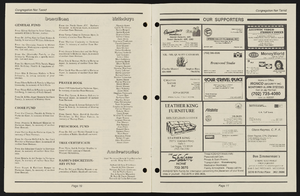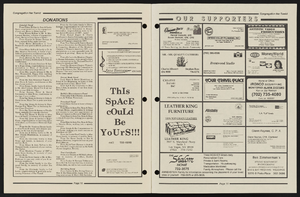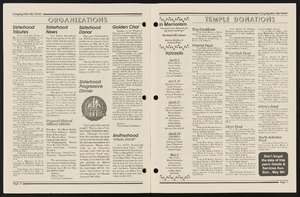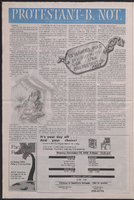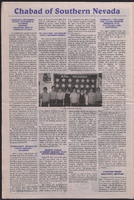Search the Special Collections and Archives Portal
Search Results
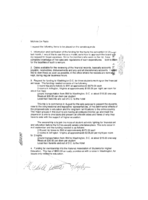
Meeting minutes for Consolidated Student Senate University of Nevada, Las Vegas, July 24, 1995
Date
1995-07-24
Archival Collection
Description
Includes meeting agenda and minutes, along with additional information about senate requests, bills, and letters.
Text
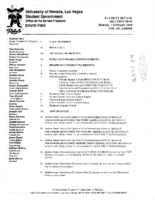
Meeting minutes for Consolidated Student Senate, University of Nevada, Las Vegas, February 07, 2000
Date
2000-02-07
Archival Collection
Description
Includes meeting minutes and agenda, along with additional information about bylaws and proposals for the Classified Staff Member Award.
Text
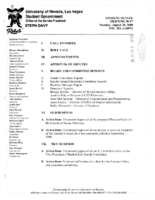
Meeting minutes for Consolidated Student Senate, University of Nevada, Las Vegas, August 28, 2000
Date
2000-08-28
Archival Collection
Description
Includes meeting minutes and agenda, along with additional information about a performance contract and program.
Text
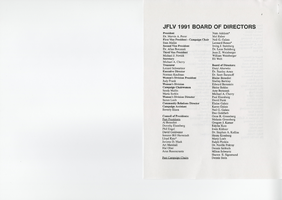
Jewish Federation correspondence, meeting minutes, and other records, item 41
Description
Annual report for the Jewish Federation of Las Vegas, January 1990-June 1991.
Pagination
Refine my results
Content Type
Creator or Contributor
Subject
Archival Collection
Digital Project
Resource Type
Year
Material Type
Place
Language
Records Classification


